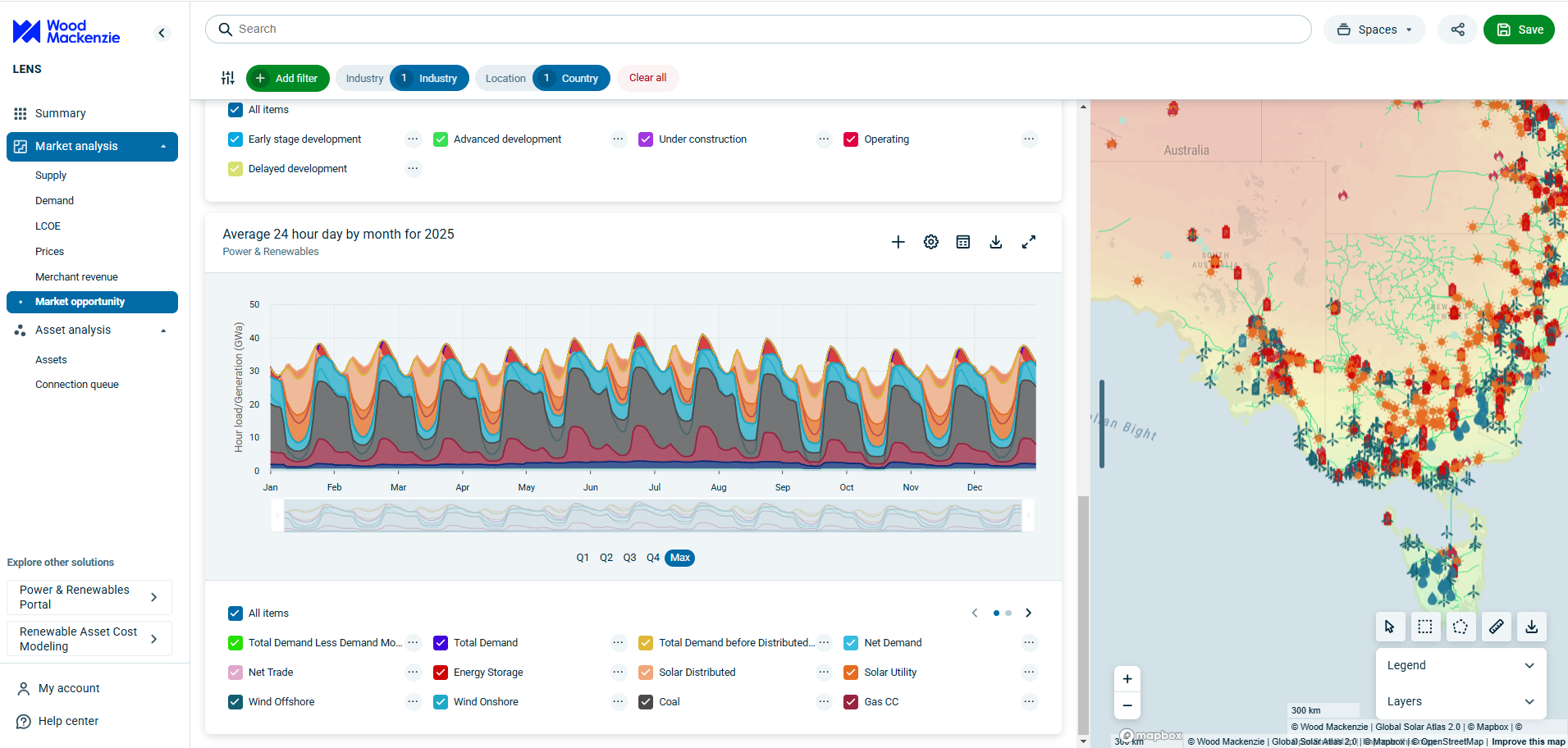US seasonal outlook webinars: hot topics for MISO and SPP in Spring 2025
SPP focuses on transmission plans while MISO struggles to address reliability
4 minute read
Madelyn Skinner
Market Analyst, SPP Team Lead

Madelyn Skinner
Market Analyst, SPP Team Lead
Madelyn is a market analyst on the SPP team.
Latest articles by Madelyn
-
Opinion
US seasonal outlook webinars: hot topics for MISO and SPP in Spring 2025
-
Opinion
US seasonal outlook webinars: hot topics for PJM and SPP in Fall 2024
Tien Tong
Market Associate, MISO

Tien Tong
Market Associate, MISO
Tien joined Wood Mackenzie in August 2022 as an analyst in the MISO team.
Latest articles by Tien
-
Opinion
US seasonal outlook webinars: hot topics for MISO and SPP in Spring 2025
-
Opinion
US seasonal outlook webinars: hot topics for ERCOT and MISO in summer 2024
-
Opinion
The key takeaways from our PJM, MISO and ERCOT seasonal outlook webinars
The rapid transformation of US electricity markets continues to present major challenges for Regional Transmission Organisations (RTOs). Faced with surging electricity demand, RTOs must act decisively to increase supply and ensure reliability.
In two recent webinars, Wood Mackenzie’s power and renewables short-term analysts reviewed the performance of SPP and MISO this winter and looked ahead at the outlook for these RTOs in Spring 2025.
Fill out the form at the top of the page for complimentary access to the full presentation decks and webinar recordings from the events, or read on for the lowdown on SPP’s efforts to upgrade its network and how MISO’s aims to address inadequate reserve margins.
Power struggle: MISO’s reliability concerns grow
In their latest Long-Term Reliability Assessment, the North American Electric Reliability Corporation (NERC) listed the Midcontinent Independent System Operator (MISO) as “High Risk”, due to inadequate reserve margins over the next five years. MISO will face shortfalls as early as this year, which could result in market volatility and blackouts across portions of the RTO’s footprint.
MISO expects peak demand to grow by 10-14% annually in the coming years and hit 60% by 2040, mostly driven by data centres and other large loads. Overall, an additional 17 GW per year of nameplate capacity is needed to meet resource adequacy needs. Yet in 2024 only 3.4 GW was added, while 56 GW of capacity with signed interconnection agreements has yet to tie into the grid, mainly due to supply chain issues.
Short-term solutions
MISO proposes several ‘quick fixes’ to address short-term concerns. A sloped demand curve should better capture marginal impacts of incremental capacity growth, reduce volatility in auction clearing prices and eliminate the need for an annual price cap. Meanwhile, efforts will be made to streamline the interconnection queue, including a 50% peak demand cap to reduce queue size, a “fast lane” for projects designed to address resource adequacy needs, and collaboration with third-party startups to automate the study process and determine project feasibility prior to study. MISO will also close the application window in Q3 2025 to deal with the existing backlog. Finally, current long-range transmission planning initiatives are to be put on hold while the future demand forecasts and models they are based on are revisited.
Addressing generation requirements
MISO faces by far the biggest loss of existing generating capacity anywhere in the North American Power Grid, with retirements posing risks to baseload and reserve generation. Six gigawatts (GW) of thermal generation (mainly coal plants) were retired in 2024, with a further 12 GW to go over the next five years. To counter this, MISO plans to extend contracts with thermal plants on the verge of retirement. Battery storage could also play a role – MISO only has 84 GW online as of 2025, but several projects are currently awaiting interconnection.
To find out about MISO’s longer-term solutions to tackle reliability concerns, fill out the form at the top of the page to download the full presentation slide deck.
Spring forward: SPP progresses with transmission upgrades
In October 2024, the Board of Directors of Southwest Power Pool (SPP) approved what the RTO described as its “historic” US$7.7 billion 2024 Integrated Transmission Plan (ITP). The plan represents the RTO’s largest ever portfolio of transmission enhancements, aiming to add more than 2,000 miles of new and upgraded transmission lines to the region’s grid to cope with existing congestion and expected increases in load.
Recently completed upgrades
SPP has already seen a relief in congestion since upgrading its Nebraska City - S3456 345 kilovolt (kV) line from 956 megavolt-amperes (MVA) to a 981 MVA summer rating. Meanwhile, after years of delays, upgrades to the 138 kV system between Tupelo and Tupelo Tap completed in December 2023 and have relieved congestion over lines including Stonewall to Tupelo and Tupelo to South Brown.
Upcoming upgrades
Rising demand from data centres in northwestern North Dakota has prompted SPP to build two new transmission lines from the North Dakota-Saskatchewan Border to Tande and Wheelock, respectively. With an indicated in-service date of October 2027, these two 230 kV lines will enable up to 650 megawatts (MW) of power imports/exports between North Dakota and Canada. Other new transmission capacity includes a 115 kV line from Finstad to Vanhook planned for December 2025, a 345 kV line from the Wolf Creek nuclear plant to Blackberry substation (July 2025), and the 345 kV Sooner to Wekiwa line, built to serve Tulsa demand and relieve congestion over the northern part of Oklahoma (October 2025).
Delayed upgrades
A number of SPP transmission improvements are running behind schedule. The 345 kV Kummer Ridge to Round Up line was due to go into service in November 2024. The line has been energised but is still not fully complete as reclamation work is expected to continue through 2025. Other delayed upgrades in the Northern Plains include: two 345 kV lines from Finstad to Tande and Leland Olds (now expected in November 2026), Oahe to Sully Buttes (delayed to September 2025), a second Scottsbluff to Victory Hill line (June 2025), and a 345 kV line from S3454 to S3740 in the Omaha area (December 2026).
Learn more
Remember to fill in the form at the top of the page for complimentary access to the slide decks from our MISO and SPP webinars. These include reviews of the winter period and outlooks for spring generation, as well as more detailed coverage of the above topics.
Plus, learn more about Wood Mackenzie’s Power Trading Analytics offering.







